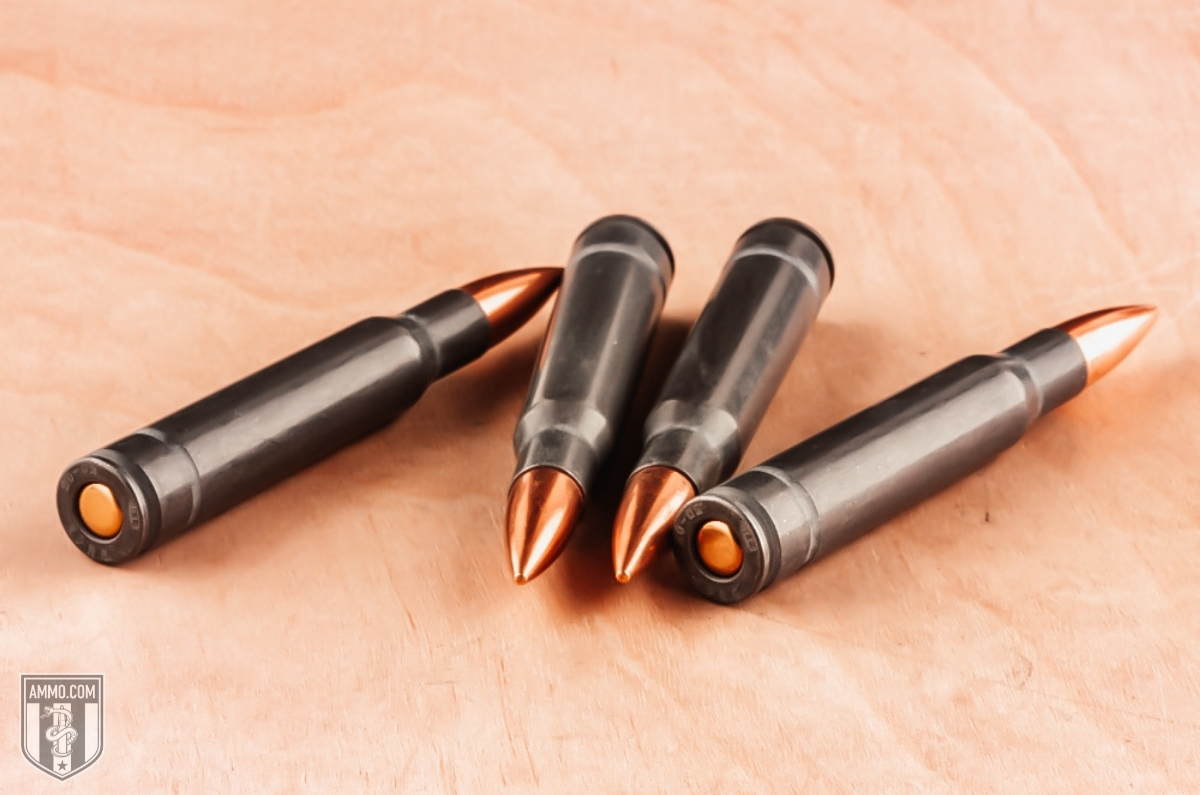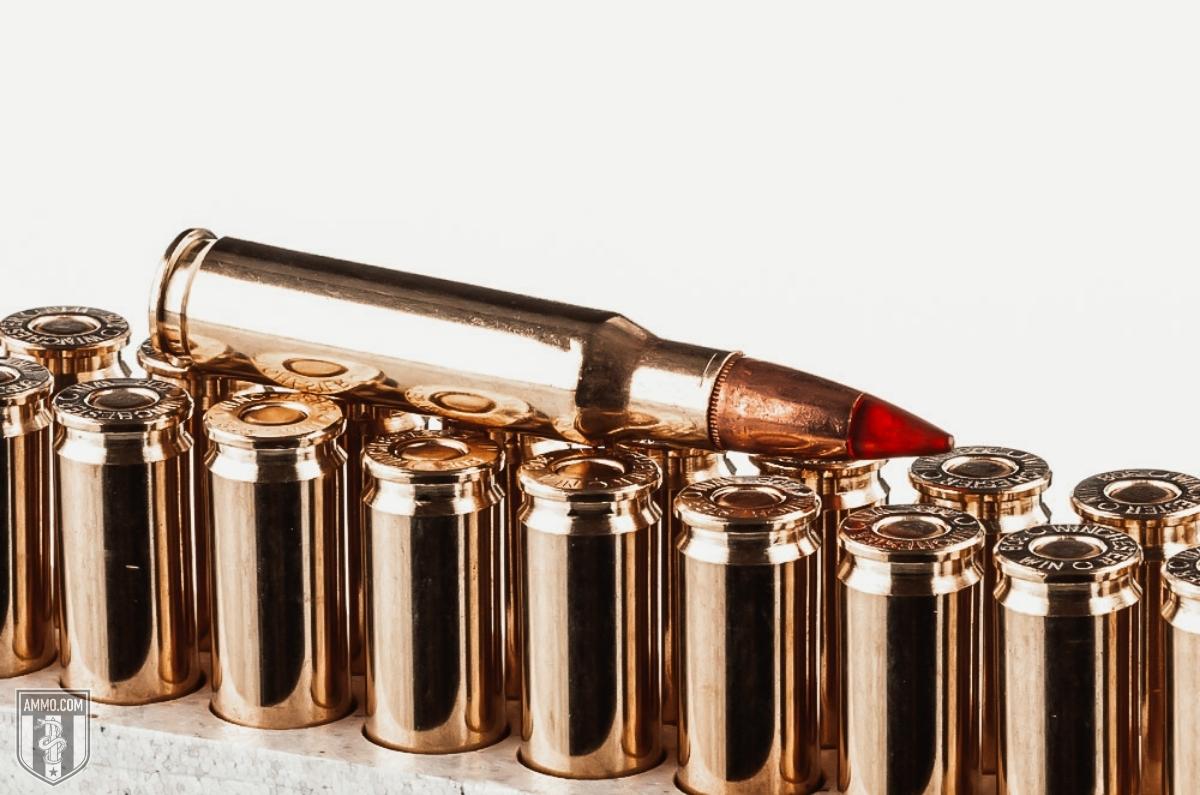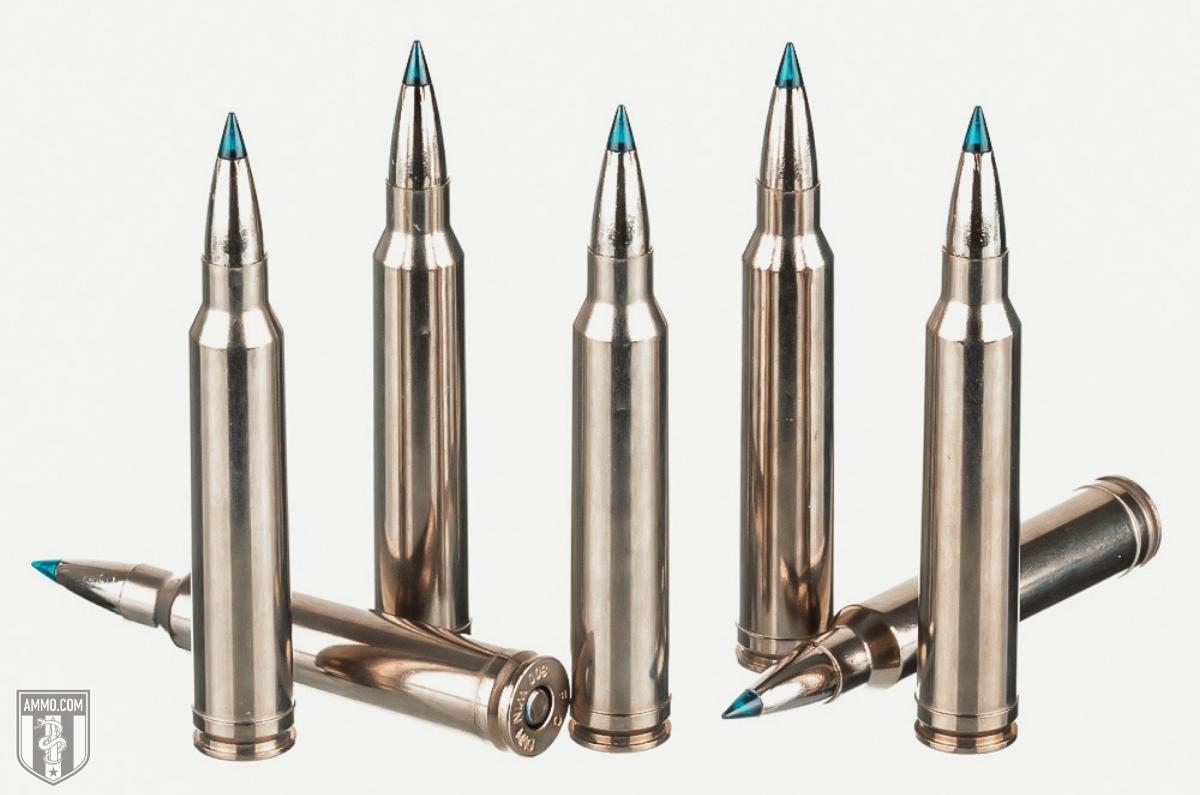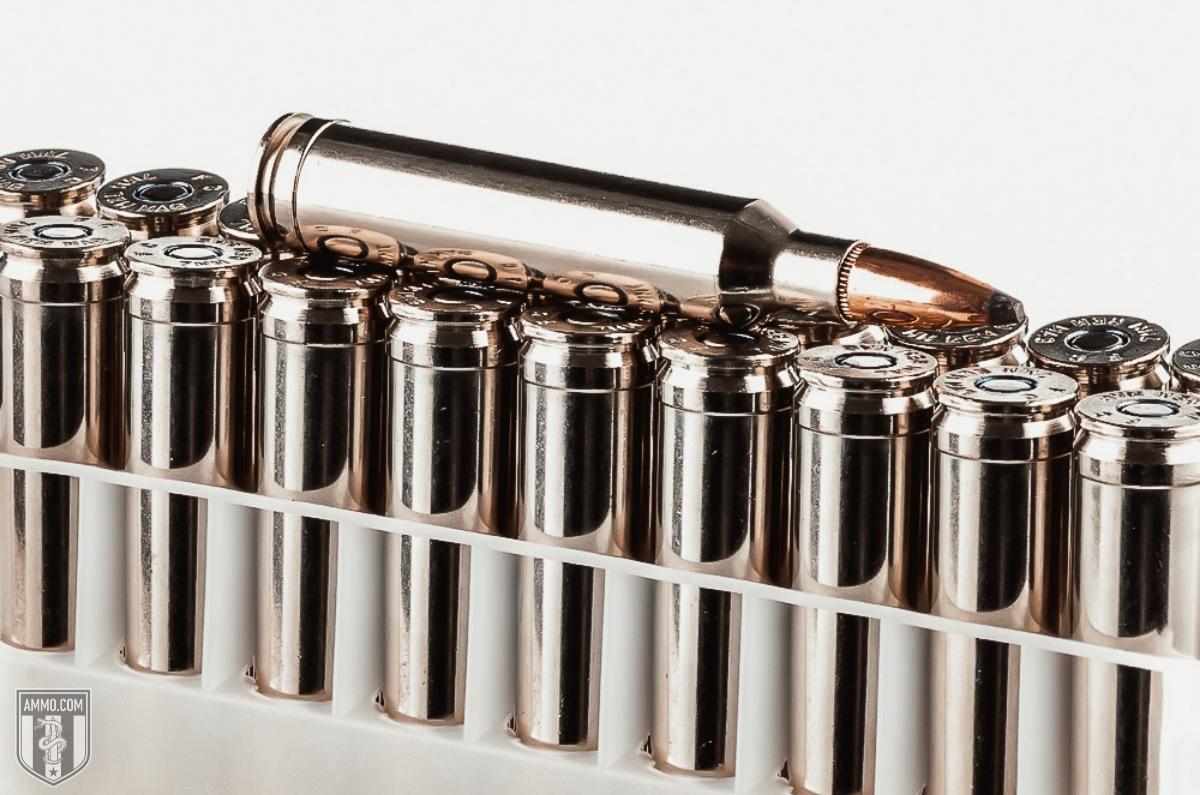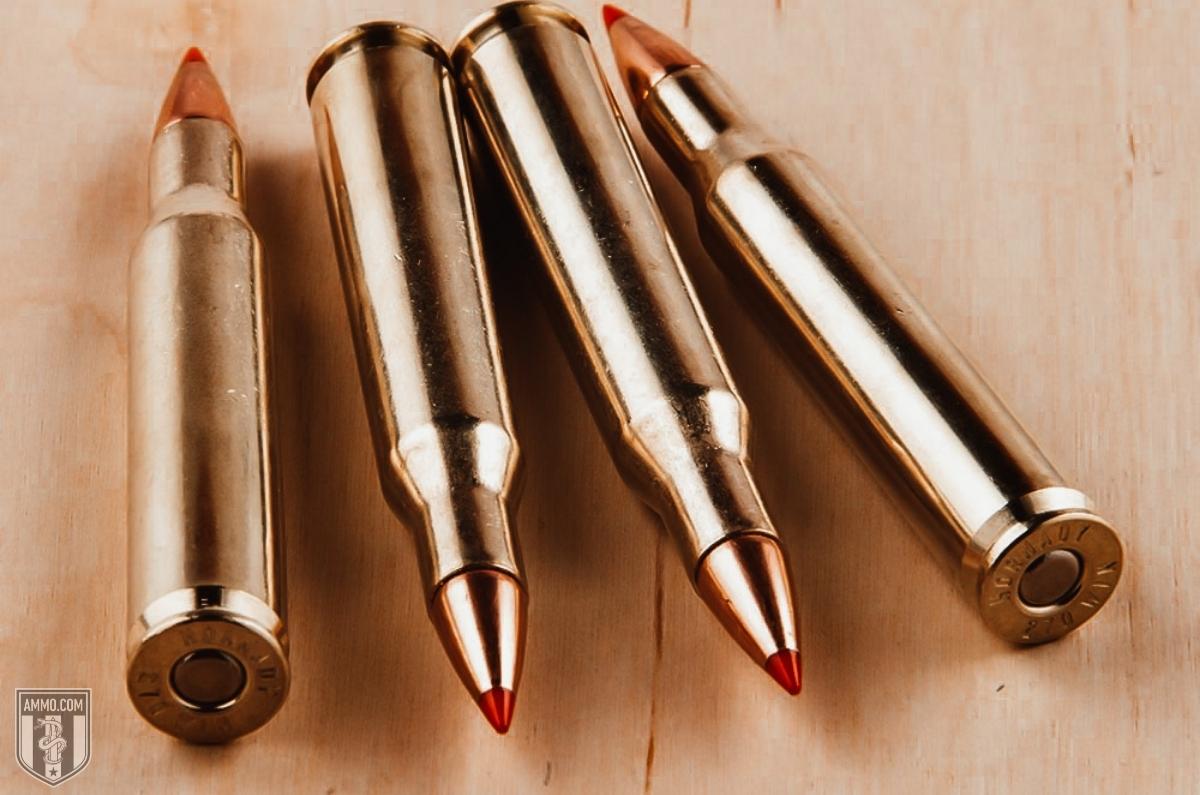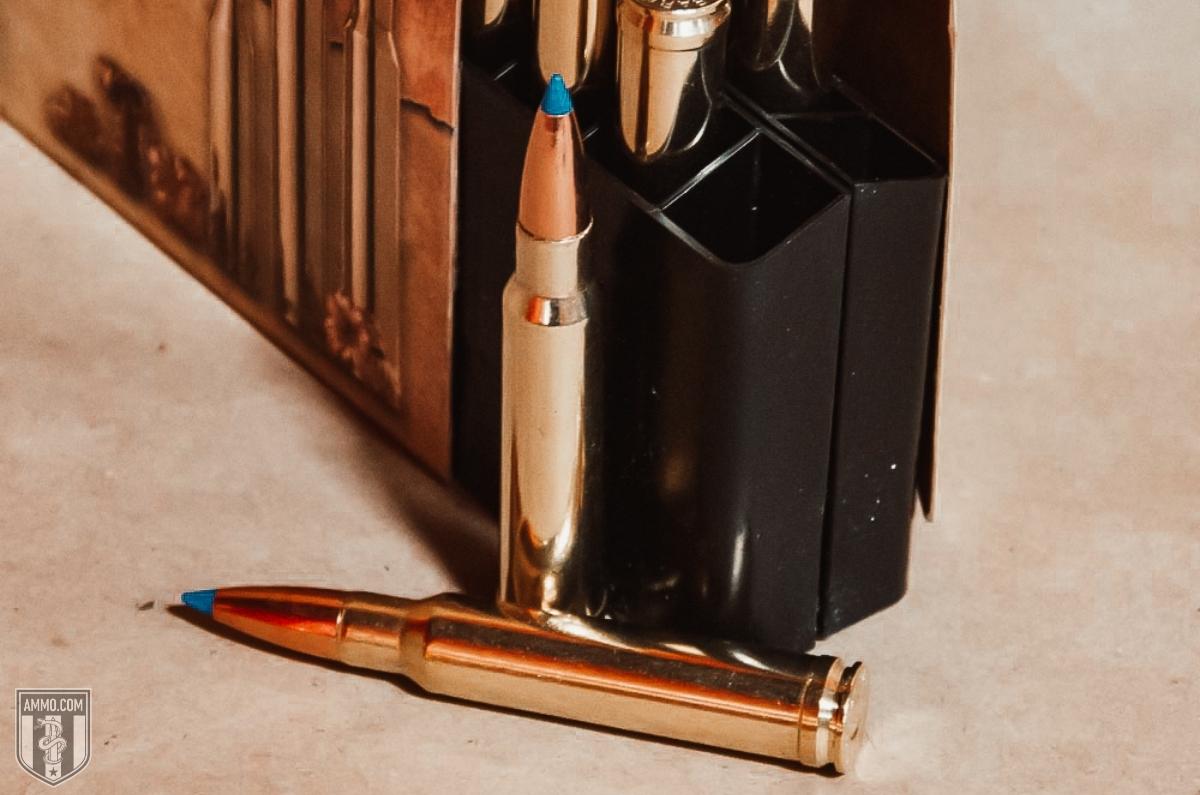Best Big Game Caliber: How to Choose the Best Big Game Cartridge for North American Hunting

If you’ve ever spent any time in a deer camp, you know that the virtues of certain hunting cartridges are hotly debated among serious big-game hunters. Modern shooters have access to hundreds of capable cartridges, and every big game hunter is convinced the one he uses is the absolute best.
Because hunters are awfully opinionated, this article won’t completely settle this age-old argument. What it will do is outline the best big-game cartridges in current production, so you can make an informed decision about which one will work best for you.
We’ve compiled this list using years of personal hunting experience and countless hours of research. While this is by no means an exhaustive list, each cartridge featured here is awfully good at filling tags and putting meat in the freezer.
Choosing the Best Big Game Cartridge
In North America, "big game" and "whitetail deer" are practically synonymous. For that reason, we’ve left out bigger, more powerful cartridges like .416 Rem Mag in favor of more versatile, do-it-all options suitable for the spectrum of North American big game.
Some of these cartridges may be slightly more powerful than the average deer hunter requires. While they may be better suited for massive moose or big, burly bison, the larger rounds on this list can also be used for harvesting whitetail in a pinch.
.30-06 Springfield
I have personal experience dropping bucks with this one in both thick woods and across open farmland. Having filled my share of deer tags with this cartridge, I am openly and unapologetically biased toward it.
And I’m not alone. The .30-06 Springfield (pronounced “thirty aught six”) regularly ranks as one of the top five best-selling rifle cartridges in the world.
The “aught six” was originally developed as a military cartridge, and it owes much of its big game popularity to those roots. Soldiers returning from both World Wars reached for the rifles and cartridges most familiar to them before trekking into the deer woods.
The same qualities that made the .30-06 a capable wartime cartridge – impressive ballistics for its time period, consistent accuracy, and deadly terminal performance – also make it a capable big game cartridge. Since its introduction in 1906, no other cartridge has put more venison on family dinner tables than the venerable “aught six”.
When topped with modern bonded bullets, the .30-06 delivers better accuracy, deeper penetration, and less fragmentation (and therefore less meat damage) than the loads our grandfathers fell in love with.
Using .30-06 ammo with a heavier, 180 grain .30 caliber bullet will produce better aerodynamics thanks to higher sectional density and ballistic coefficient. If you need to stretch out your shots, the heavier bullet weight will hold velocity and deliver more impact energy downrange.
The .30-06 delivers its best performance inside of 200 yards. However, when held in skilled hands, this cartridge is plenty capable of dropping whitetails, antelope, elk, and caribou out past 300 yards.
Many .30-06 hunters humbly brag about bagging whitetails beyond the 300-yard mark. I say power to them, but also point out that other cartridges on this list offer better long-range performance.
.308 Winchester
The .308 Winchester is another best-selling .30 cal cartridge. While the .30-06 produces a faster muzzle velocity (around 100 to 200 fps faster), delivers better ballistics, and carries more kinetic energy, the .308 has its own advantages in the field.
The .308 Winchester has noticeably less recoil than the “aught six”. The recoil of an 8-pound bolt-action .30-06 rifle firing a 180 grain bullet is around 20 foot-pounds. By comparison, a .308 pushing the same bullet would deliver a milder 17.5 foot-pounds of recoil to the shoulder.
That might not sound like all that great a difference. But when recoil is that much softer, it does make it easier to restore aim and fire fast follow-up shots.
With its shorter action than the .30-06, the .308 also allows you to carry a shorter, lighter, more maneuverable hunting rifle. If you have to hike miles into the backcountry, the .308 won’t tire you out as quickly.
Another major perk: the .308 Winchester is the standard chambering for the AR-10. If you’ve ever dreamed of deer hunting with a modern sporting rifle, this cartridge will make that dream a reality.
.300 Winchester Magnum
Compared to the .308 Win and .30-06 Springfield, the .300 Win Mag is a .30 cal cartridge on steroids. It shoots heavy bullets at breakneck speeds, and delivers punishing terminal energy on big game animals.
A Hornady 180 grain SST bullet leaves home at a blistering 3130 fps. At 500 yards, the same bullet drops a full 10 inches less than the .30-06, giving the .300 Win Mag a major trajectory and energy advantage over its .30 cal cousins.
To take full advantage of the .300 Win Mag’s excellent ballistics, choose a load with a heavier 200 grain bullet with a high ballistic coefficient. Your shots will be pancake flat and capable of bucking a stiff crosswind like it isn’t even there.
This superhero performance comes at a price, however. Rifles that fire .300 Win Mag are heavy, long, and somewhat cumbersome. .300 Win Mag ammo is also more expensive, harder recoiling, and harsh on barrels.
Some hunters consider .300 Win Mag to be a major overkill for whitetails. However, if you want a rifle cartridge capable of pulling double duty on eastern whitetails and western elk, mule deer, and black bear – especially at long distances – this is it.
7mm Remington Magnum
As the first mainstream factory-produced magnum cartridge, the 7mm Rem Mag (affectionately referred to as “Seven Mag”) is largely responsible for the modern hunter’s current magnum love affair. It is also one of the most popular big game cartridges on the market today.
Big game hunters are serious about their ammo, and cartridges don’t reach high levels of popularity unless they deliver serious performance. With that in mind, you can bet the 7mm Rem Mag makes the best-seller list for good reason.
Although 7mm isn’t as popular as .30 cal hunting cartridges, it walks a tight rope between big bullet diameter and the higher BC of the popular 6.5mm Creedmoor. While the speed and trajectory of the 7mm are comparable to the long-range abilities of the Creedmoor, it carries kinetic energy similar to the .30-06.
While there are other 7mm cartridges that offer better ballistics and on-target energy (We’re looking at you, .280 Ackley), the Seven Mag’s popularity offers some major advantages.
There is no shortage of high-quality, affordable hunting rifles chambered in 7mm Rem Mag. You can also find every type of factory load under the sun. Every major ammo manufacturer has 7mm Rem Mag under all their most popular big game lines, offering loads optimized for everything from hogs to dangerous game.
The Seven Mag’s recoil may be a little rough for some, but it isn’t any harder to handle than the .30-06.
.270 Winchester
When the .270 Winchester was first introduced in 1925, it didn’t take the hunting world by storm. It would gain popularity more gradually, and largely thanks to its endorsement by Outdoor Life writer Jack O'Connor. The .270 has remained a favorite among big game hunters ever since.
The design is simple: a.30-06 Springfield case necked down to hold a smaller .277 inch diameter bullet. It carries bullets with just enough weight to adequately handle any big game species in North America.
Delivering ballistics nearly identical to the 7mm Rem Mag, the .270 Win shoots incredibly flat out to 300 yards. That means you can basically aim and fire your rifle in most hunting situations without having to do an elaborate dance with windage and elevation.
If you need to stretch shots across open prairie, the .270 Winchester holds both energy and velocity well, and only drops around 40 inches at 500 yards.
The .270 also has relatively mild recoil for a big game cartridge, kicking with only around 18 foot-pounds from an 8-pound rifle. That amount of recoil should be manageable for all but the most recoil-sensitive shooters.
.270 Winchester ammo is also affordable and readily available.
6.5 Creedmoor
While 6.5 Creedmoor is famous for ruling the long-range competition field, it also reigns as a high-performance big game cartridge. Shooting high BC bullets that hold velocity and easily buck the wind, 6.5 Creedmoor is one of the most inherently accurate cartridges available to modern big-game hunters.
Be sure to pick Creedmoor loads designed to deliver lethal terminal performance on tough game. Choose heavier, spitzer-style bullets (think 140 grains) engineered for controlled expansion. We love Hornady’s ELD-X and the Nosler Partition for dropping big bull elk at longer distances. Heavier bullets also have higher sectional density, which promotes deeper penetration through flesh.(Loads with lighter bullets are fine for whitetail deer, though.)
The 6.5mm bullet diameter is much narrower than most of the other calibers on our list. However, the Creedmoor’s ballistic performance makes proper shot placement easier, especially at longer distances. A bullet in the boiler room will beat a poorly placed shot every time, no matter what diameter bullet you’re shooting.
With its rockstar performance and popularity, 6.5 Creedmoor is widely chambered in almost every major hunting rifle model, from semi-automatic AR-10s to the ever-popular bolt-action Remington 700.
A wide variety of ammo is also readily available for Creedmoor fans, with factory loads engineered for everything from varmints and coyotes to elk and caribou.
.375 H&H Magnum
The .375 H&H Magnum (also known as .375 Holland & Holland Magnum) is a favorite cartridge among Alaskan big game hunters.
This cartridge may be a bit much for whitetails (and even bigger-bodied ungulates like elk and caribou). However, its power provides peace of mind if you hunt areas where you could suddenly come face to face with brown bears.
The .375 H&H also provides enough knockdown power for hunters itching to shoot big game animals like Cape buffalo and elephants in Africa. In some areas, this cartridge is the mandatory minimum for certain tough, dangerous, thick-skinned species.
.375 H&H loads from Hornady’s Dangerous Game Series ammo line lob a 300-grain bonded bullet at 2530 fps with a whopping 4263 foot-pounds of muzzle energy. These loads continue to hit like a freight train out beyond 200 yards.
The in-flight ballistics of the .375 H&H aren’t all that impressive. You can expect that 300 grain bullet to drop a full 78 inches at 500 yards. However, if you need to drop a charging bruin dead in its tracks, this cartridge delivers a major shock wave at close to medium ranges.
Unfortunately, all that stopping power is going to cost you. Rifles chambered in .375 H&H are long, heavy, and cumbersome to tote through backcountry brush. A 9-pound .375 H&H is considered a lightweight rifle.
The ammo is also going to cost you, and it isn’t always easy to find. Plus, the .375 H&H Magnum’s recoil is seriously abusive on your shoulder. That 300 grain bullet shot from a 9-pound rifle is going to thump your shoulder with over 37 foot-pounds of force. This one definitely isn’t for the faint of heart.
.338 Winchester Magnum
Although the .338 Win Mag doesn’t boast the same big bore diameter as the .375 H&H, it offers exceptional killing power for big elk, moose, brown bear, and even bison.
Compared to the .375 H&H, the .338 Win Mag boasts higher sectional density, faster velocities, less drop over distance, and more on-target energy. It also manages to do all that with recoil that is at least slightly more manageable.
The .338 Win Mag drives a 225 grain bullet at a velocity of 2800, fps with 3917 foot-pounds of energy. The bullet holds both speed and energy more efficiently than the heftier .375 H&H, delivering 1891 foot-pounds of penetrating energy at 500 yards.
Performance like that makes the .338 Magnum better suited than the .375 H&H for dropping big game at distances beyond 250 yards.
The .338 Win Mag definitely isn’t as popular as other big game cartridges like the .30-06 or .243. That can sometimes make finding a suitable rifle and appropriate ammo a bit tricky. However, .338 isn’t exactly a wildcat cartridge, either. There are still plenty of affordable rifles and hunting loads on the market. You just might have to do a little digging to find them.
.243 Winchester
I hesitate to include the small-caliber .243 Winchester cartridge on this list, and I’m sure some big game hunters will scoff at its inclusion. However, it is the minimum legal big game caliber in many states. It is also one of the most popular hunting cartridges for recoil-sensitive hunters.
Shoot a load with a 100 grain soft point, and the bullet leaves the muzzle at close to 3000 fps. The projectile retains enough energy to harvest deer-sized game out to at least 300 yards.
The .243 Win manages that performance with minimal recoil. Even though .243 deer rifles tend to be light and maneuverable compared to other popular big game hunting options, 100 grain load will push less than 9 foot-pounds of recoil into your shoulder. Its mild recoil is the main reason why this cartridge is a long-standing favorite among younger hunters and some women.
The .243 Win definitely works best as a whitetail-specific round (although it will work quite well on coyotes if the need arises), especially if you keep your shots within a reasonable distance.
Can you kill elk with a .243? Plenty of wapiti have ended up in freezers thanks to this cartridge. Is it the best tool for the job? Probably not. Small, relatively lightweight projectiles are no match for the thick shoulder blades of a big bull.
Shot placement is everything when you’re shooting a .243. There’s just a lot that can go wrong, especially if you are attempting to make ethical shots beyond 200 yards. Wait for your target to come to a reasonable distance and give a good broadside presentation, then put your crosshairs square on the boiler room and pull the trigger.
Final Thoughts
Every single emtry on this list has proven its worth as a big game cartridge. Asking us to choose a single cartridge as “The Best Big Game Cartridge” is like asking a mother to name her favorite child. It’s practically impossible. They are all great options, and we love them for different reasons.
However, if we were forced to pick one at gunpoint, it would probably be the .30-06 Springfield. With over a century of experience under its belt, the .30-06 is still the most popular big game cartridge in America. It also makes a solid showing among hunters on other continents.
Cartridge Recommendations
- Best Caliber for Deer Hunting
- Best Big Game Caliber
- The 10 Best Coyote Cartridges
- Best Cartridge for Elk Hunting
- Best Cartridge for Self-Defense
- Best Cartridge for Concealed Carry
- Best Handgun Cartridge
- Best Moose Cartridges
- Best 40 S&W Ammo For Self Defense & Target Practice
- Best 223 Ammo
- Best .44 Magnum Ammo
- Best 270 Ammo for Hunting
- Best 17 HMR Ammo for Varmint Hunting and Plinking
- Best 22 Rimfire Ammo
- 4 Best AK-47 Ammo Picks [7.62x39]
- Best 38 Special Ammo for Self Defense
- Best Handgun Ammo for Self-Defense in Common Calibers
- Best 308 Ammo For Hunting & Target Shooting
- Best 300 Win Mag Ammo
- Best 243 Ammo for Target Shooting
- 10 Best 6.5 mm Cartridges For Long-Range Shooting and Hunting
- Best 45 ACP Hollow Points for Self-Defense
- Best 12 Gauge Ammo for Home Defense
- Best 32 ACP Ammo for Your Pocket Pistol or Backup Gun
- Top 13 Best AR Calibers That Aren’t 5.56 NATO
- Best Ammo for Smith and Wesson M&P 9mm Shield
- Best 7.62x39 Ammo for Self Defense
- Best 20 Gauge Ammo for Home Defense, Whitetail, and Upland Game
- Best Ammo for 1911 45 ACP
- Best 12 Gauge Ammo for Deer Hunting
- Best .40 S&W Ammo for Self Defense
- Best 7.62x39 Hunting Ammo
- Best 5.56 Ammo for Home Defense
- Best 380 Self-Defense Ammo
- Best 45 ACP Ammo for Every Situation
- Best Ammo for Glock 43x
- Top 5 Best 22 WMR Ammo on the Market
- Best Ammo for Glock 19
- Best Sniper Ammo
- Best 38 Special Ammo For Target Practice Precision Shooting
- Top 5 Best 45 ACP Ammo for Target Practice
- Best 6.5 Creedmoor Hunting Ammo
- Top 10 Best Sniper Rifle Cartridges
- Best 6.5 Grendel Ammo
- Best 5.45x39 Ammo for Your Gun
- Best 10mm Ammo for Bear Defense
- Best 350 Legend Ammo
- Top 5 Best 30-06 Ammo for Deer Hunting
- Best 30-06 Ammo for Accuracy
- Best 300 Win Mag Ammo for Deer
- Best M193 Ammo for Stockpiling
- Best 300 Blackout Ammo for a 7.5" Barrel
- Best Shotgun Shells for Target Practice
- Best 45 ACP for Bear Defense
- Best 223 for Deer Hunting
- Best Exotic 9mm Ammo
- Best Duck Hunting Shells
- Best .357 SIG Defensive Ammo
- Best Beretta APX 9mm Ammo
- Best 22 Pistol Ammo
- Best 9mm Ammo
- Best 308 Ammo for Deer Hunting
- Best Ammo for the Taurus GX4
- Best Ammo For Taurus PT111 G2
- Best Shells For Trap Shooting
- Best 38 Special Ammo for Snubbies
- Best 410 Ammo For A Taurus Judge
- Best Ammo for Ruger Security 9
- Best Ammo for Taurus G3c
- Best 7mm Rem Mag Ammo
- Best Lead-Free Hunting Ammunition
- Best 300 Blackout Ammo for Hog Hunting
- Best 9mm Home Defense Ammo
- Best 10mm Ammo for Every Shooting Situation
- Best .22 LR Ammo for Self-Defense
- Best Long-Range Hunting Bullets
- Best 357 Magnum Ammo For Every Shooting Situation
- Best 45 ACP Ammo For Self-Defense
- Best 6.5 Creedmoor Ammo For Accuracy
- Best 45-70 Ammo For Hunting & Target Shooting
- Best Turkey Loads
- Deadliest Shotgun Ammo For Home Defense
- Best 300 Win Mag Ammo For Elk Hunting
- Best 9mm Subsonic Ammo
- Best 7mm PRC Ammo
- Best 300 Blackout Subsonic Ammo
- Best 308 Subsonic Ammo for Hunting
